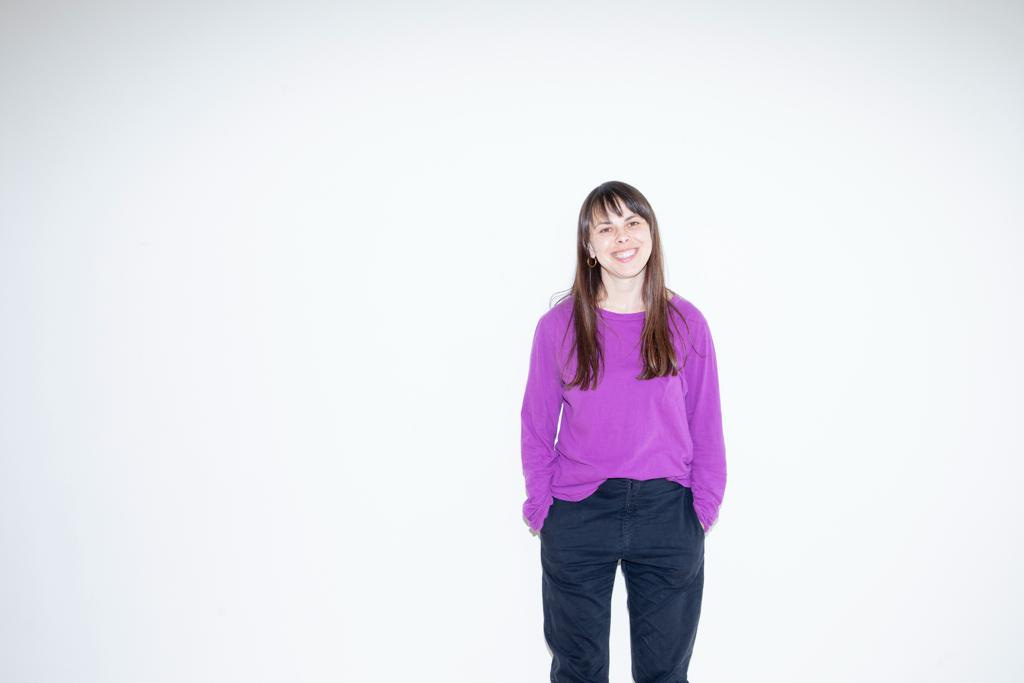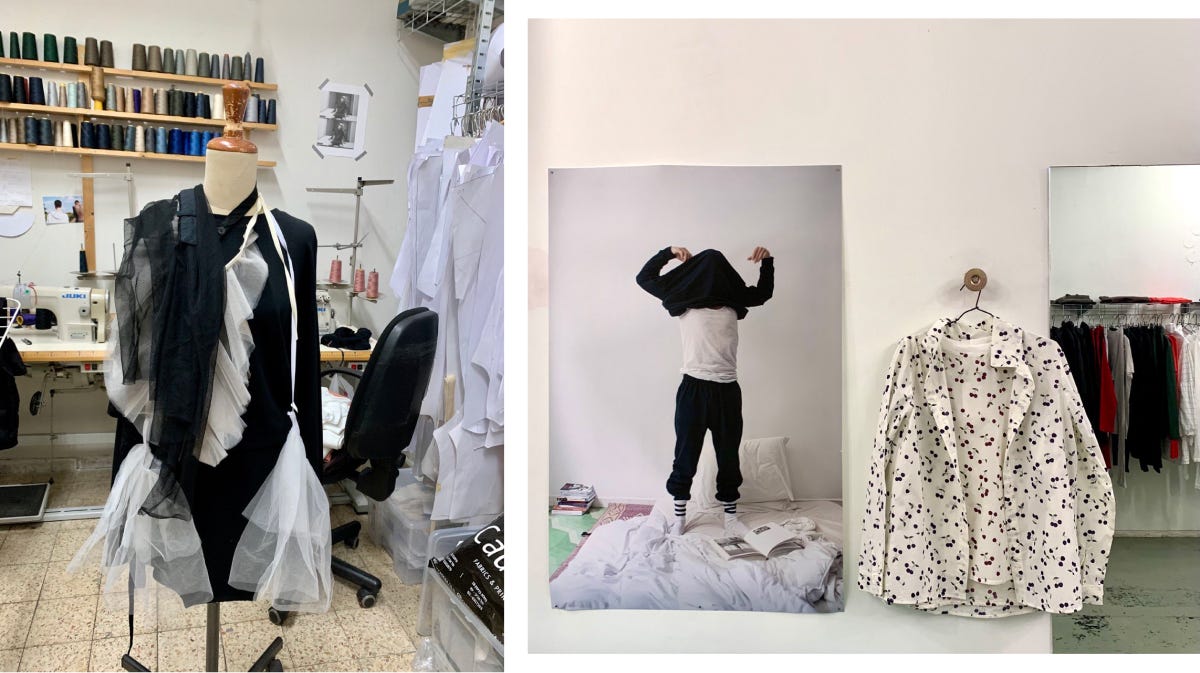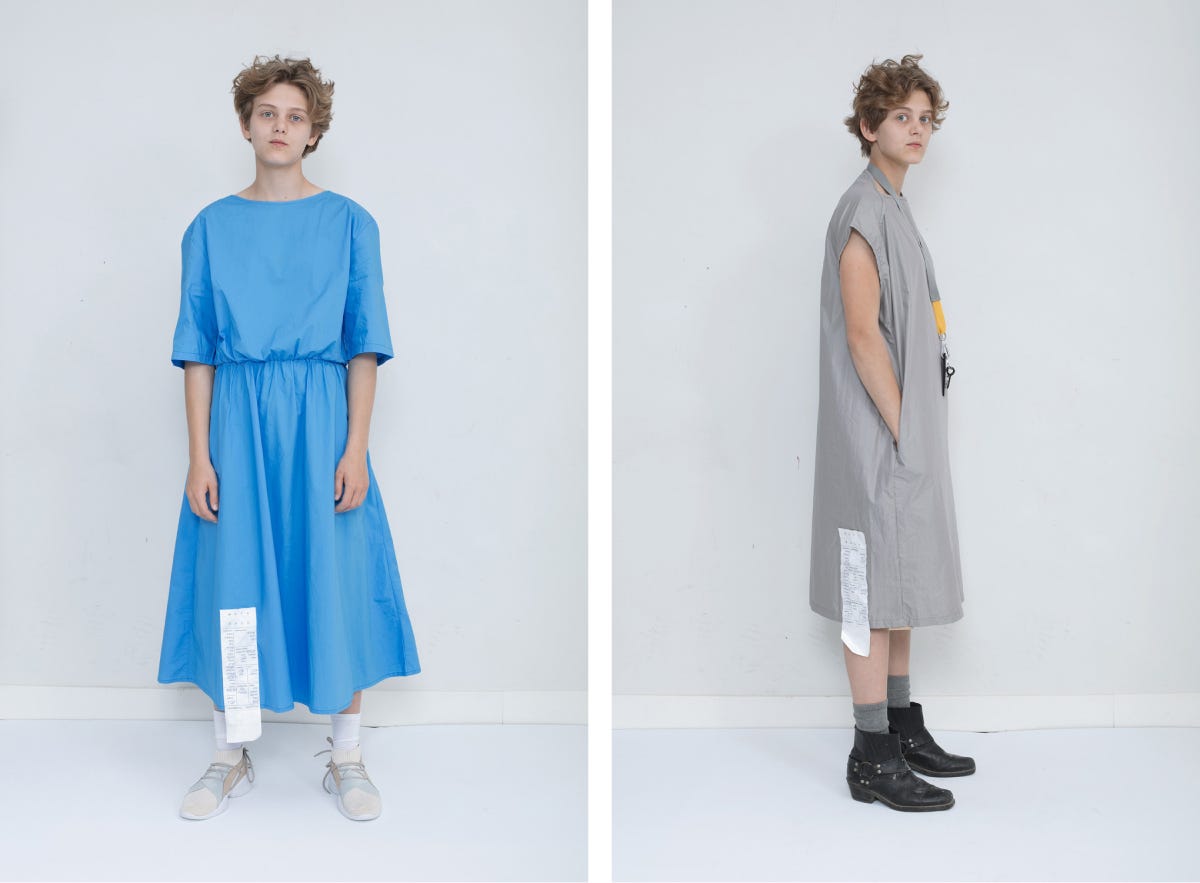Maya Bash: Tel Avivian, but make it fashion
«When it comes to gender-neutral clothes like dresses and skirts, there is still inequality»
Maya Bash is one of the first talents I rushed to meet in Tel Aviv. Maya immigrated to Israel from the USSR when she was 12. After graduating from Shenkar she launched her own brand, and, a few years later received a grant to study at UAL, where she spent approximately a year. In Maya Bash's monochromatic, minimalist pieces, I see the essence of Tel Avivian modernism, and at the same time the reflection of an artist who carries memories of her time in the USSR.
Sometimes we chat at her cozy shop-cum-studio on Barzilai Street, one of my favorites. However, Maya is preparing to move to a new space and is holding a sample sale to clear out her inventory : “Everything must go! We need to make room for new energy!”
– You say that you make clothes that go beyond the conventional notions of gender for men and women. Do you believe in this concept? Can you find it in Israel?
– Certainly. Particularly in Tel Aviv. There are men who can pull off long skirts. Until recently, the concept of gender neutrality primarily involved women wearing men's clothes. However, a skirt on a man is not seen as neutral. While my brand's clientele consists mostly of women, around 15 percent are men. Although this percentage has slightly increased recently, there is still a disproportion.
I have a customer, who teaches at Jerusalem University. He bought his second skirt from me. After buying the first one, he said that it was his initial experience of purchasing a skirt — a gesture that changed something for him. Wearing a skirt does not make him appear feminine: instead, it makes him feel brave and liberated. But in general, when it comes to gender–neutral clothes like dresses and skirts, there is still inequality. It takes more courage for a man to wear a skirt or a dress, compared to a woman who decides to wear a men's pantsuit.
– How do people perceive your clothes around here?
– My clothes occupy their own little niche. They are not insanely expensive and not very cheap. They are perceived as practical, sustainable – well, as much as possible – while embodying creativity and sophistication. They don’t follow passing trends: if the pants fit just right, you can wear them for another 10 years because you feel comfortable in them. My clothes attract those people with similar professions.
– Which professions?
– Artists, psychologists… I have a lot of psychologists! (Laughs) Lawyers, designers… Most of them are freelancers.
– I recently learned that in Israel, there is a word used to describe a person who dresses up excessively – פלצן (pronounced “faltzan”). Does it carry a hint of disapproval? Like a “phony”?
– It's sort of a show–offy thing, but not quite a “fashionista” thing. A “faltzan” is a person who in a conversation with you feels compelled to prove their superiority. For example, imagine you are at an art exhibition opening, and a man arrived dressed in Comme des Garçons and Gucci altogether, and he boasts about his recent visit here and there, then dressed up in this, and all of this is out of place – it’s that kind of person you label a “faltzan”.
– Does Maya Bash style reflect Tel Aviv’s style?
– I think it's an integral part of the city’s scenery. It fits in here because I've lived here for many years. Tel Aviv is not a big city, and sometimes it seems that all the cool women around you are dressed in Maya Bash. You go to a documentary film festival, and you see people wearing our brand. Tel Aviv’s style is very eclectic and liberating; you can enter the fanciest restaurant wearing flip flops and shorts, because there is no dress code anywhere. In this city of ultimate freedom, I create something, and it resonates with people in their 30s who value self–expression, both internally and externally, against the backdrop of all that Bauhaus.
– In one of your interviews, I came across the part where you mentioned living in a small town and dreaming of breaking free from it. Is there any noticeable contrast between a small city and a larger one in this context?
– It wasn't exactly a small town [that affected me], but rather the fact that those were difficult years, teenage years, I came to a new country from the Soviet Union, and it was a complete shock. Here, everyone around me wore sneakers and Levi's jeans. I arrived in a woolen Finnish suit, which was really difficult to obtain where I came from, and in pumps. Naturally, as I looked so different, I faced bullying, I felt defensive and completely alone. The size of my hometown wasn’t that important; it is located only 20 km away from Tel Aviv. It was more about my desire to change my situation, and it really changed; you move from a small and not–so–cool place to a city with more people and greater freedom.
– You collaborate with artists like Zoya Cherkassky and Avigail Kolker. What is your personal goal in these collaborations?
– I want it to be interesting. There is no fixed end result; it's more about brainstorming moments.
– What about costumes for contemporary dance? (Among other things, Maya designed costumes for the Yasmeen Godder dance performance and Blue Zone by Galit Liss).
– This is a challenge for someone like me who tends to doubt their own abilities. I often feel insecure, constantly thinking that if I delve deeper, I’ll only uncover emptiness. It's an eternal torment and shame of not knowing something. But whenever I am approached for a collaboration, I find great strength within myself and realize that I can create a concept very well. When I undertake a project, I invest myself in it. It's present in my head all the time. When I work alone, I can make mistakes that only I notice; I may overlook certain details or fail to finish something. But when it comes for designing for dance, I can't afford slip–ups; I have standards.
– What to expect from your next collection?
– Currently, I don't make collections; I have an ongoing creative process. There are times that need to be experienced, and I make clothes in the style of the brand, but they are not confined to specific collections. The process is somewhat repetitive, but it’s a kind of a break [from traditional collection cycles]. But a new idea is already flourishing.
5 short questions to Maya Bash:
– Your bestseller?
– Basic tee.
– Favourite thing?
– Any jacket.
– Where to eat in Tel Aviv?
– Dagei Batshon.
– Favourite secret place in Tel Aviv?
– Kiryat Sefer Park.
– Favourite month of the year in Tel Aviv?
– May.






